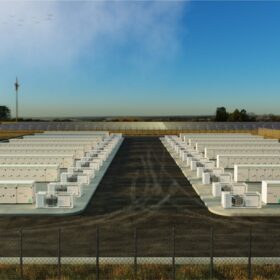Earlier this week at the BNEF Future of Energy Summit, Trump-appointed EPA transition chief and professional climate denier Myron Ebell alleged that the Obama Administration was trying to make “heartland” states Indiana similar to California. It was a curious statement which spoke more about Ebell’s own worldview and the cultural conflicts between liberals and conservatives, and as the Smart Electric Power Association’s (SEPA) latest annual lists of utility deployment of solar show, such distinctions have little to do with deployment of renewable energy.
In fact, while California utilities still took the number one spots in terms of absolute solar deployed and solar watts per customer, so-called “red” or Republican-leaning states in the South, Midwest and Mountain West are closing in on them. For total watts of solar deployed at the end of 2016, Rocky Mountain Power in Utah came in a close third behind Northern California’s PG&E at 760 watts, and utilities in Georgia, North Carolina and Texas made up half of the top 10.
|
Solar Capacity |
|||
| Utility Name | State | Rank | Capacity (MW) |
| Southern California Edison | California | 1 | 1648 |
| Pacific Gas & Electric | California | 2 | 773 |
| Rocky Mountain Power | Utah | 3 | 760 |
| LADWP | California | 4 | 732 |
| Georgia Power | Georgia | 5 | 553 |
| San Diego Gas & Electric | California | 6 | 382 |
| Duke Energy Progress | North Carolina | 7 | 356 |
| CPS Energy | Texas | 8 | 245 |
| Dominion North Carolina Power | North Carolina | 9 | 206 |
| Duke Energy Carolinas | North Carolina | 10 | 199 |
On a per-customer basis it is hard for anyone to reach the City of Palo Alto’s 2,753 watts per customer, but Dominion North Carolina came in second at 1.7 kW, followed by Farmer’s Electric Coop – Kalona in Iowa at 1.6 kW and Arkansas’ Ouachita Electric Cooperative Corporation at 1.3 kW.
| Solar Watts per Customer | |||
| Utility Name | State | Rank | Watts/Customer |
| City of Palo Alto Utilities | California | 1 | 2753 |
| Dominion North Carolina Power | North Carolina | 2 | 1718 |
| Farmers Electric Coop – Kalona | Iowa | 3 | 1564 |
| Ouachita Electric Cooperative Corporation | Arkansas | 4 | 1282 |
| Brunswick Electric Membership Corporation | North Carolina | 5 | 1183 |
| Rocky Mountain Power | Utah | 6 | 847 |
| City of Colton | California | 7 | 800 |
| Cobb EMC | Georgia | 8 | 639 |
| Roseville Electric | California | 9 | 632 |
| Pasadena Water and Power | California | 10 | 545 |
This year SEPA has introduced a new top 10 lists for energy storage as well. These don’t reflect the massive roll-out of storage by Southern California utilities in response to the Aliso Canyon gas leak as most of these projects came online in early 2017, but California utilities still take the top spots for total watts. Imperial Irrigation District and Southern California Edison came in first and second place at 30 MW and 23 MW respectively. Illinois’ ComEdison is third at 22 MW.
Per-customer storage deployment is a different story. Massachusetts’ Sterling Municipal Light Department comes at the top with 533 watts per customer, but Kentucky’s Glasgow EPB is in second place at 248 watts. And don’t tell Myron Ebell, but Indianapolis Power and Light came in 5th place at 42 watts.
SEPA says that the lists are an attempt to give exposure to the good work that some utilities are doing. “One of the reasons we started the Utility Solar Top 10 lists back in 2007 was to highlight the key, but often unrecognized role utilities were taking in putting new solar on the grid,” said SEPA President and CEO Julia Hamm.
“With utility-scale solar now well established as a mainstream power source, we wanted to similarly recognize utilities’ leadership in realizing the full potential of storage to drive critical system changes that will benefit customers and the grid.”
And as the solar industry grows, it does not differentiate between “red” and “blue” states. Instead, Americans across the political spectrum are moving to cleaner, smarter and more economically competitive energy.
This content is protected by copyright and may not be reused. If you want to cooperate with us and would like to reuse some of our content, please contact: editors@pv-magazine.com.









By submitting this form you agree to pv magazine using your data for the purposes of publishing your comment.
Your personal data will only be disclosed or otherwise transmitted to third parties for the purposes of spam filtering or if this is necessary for technical maintenance of the website. Any other transfer to third parties will not take place unless this is justified on the basis of applicable data protection regulations or if pv magazine is legally obliged to do so.
You may revoke this consent at any time with effect for the future, in which case your personal data will be deleted immediately. Otherwise, your data will be deleted if pv magazine has processed your request or the purpose of data storage is fulfilled.
Further information on data privacy can be found in our Data Protection Policy.